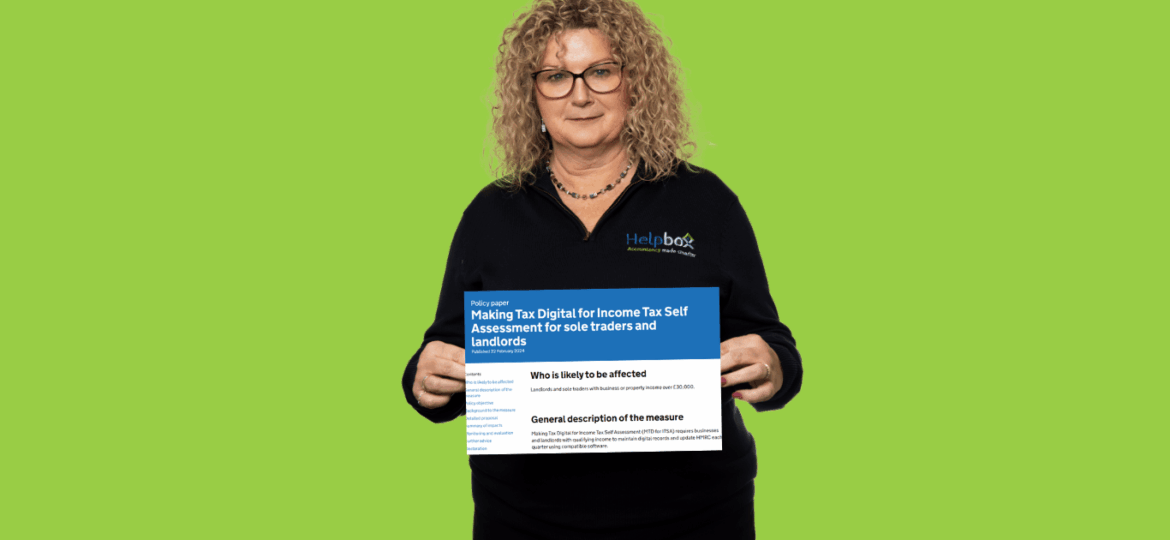
The Ultimate MTD ITSA Guide: What Small Business Owners Need to Know
The Ultimate MTD ITSA Guide: What Small Business Owners Need to Know
From April 2026, HMRC is rolling out Making Tax Digital for Income Tax Self‑Assessment (MTD ITSA) in stages. This requires small business owners and landlords with high earnings to keep digital records and submit quarterly updates via compatible software. We’ll explain who’s affected, what “qualifying income” means, key dates, and how to prepare—simplified in clear, helpful language.
What is MTD ITSA?
MTD (Making Tax Digital) is HMRC’s long-term plan to modernise the UK tax system. Originally launched for VAT, it’s now expanding to Income Tax Self‑Assessment (ITSA).
Under MTD ITSA, eligible sole traders and landlords must:
- Keep all records digitally
- Send quarterly updates of income and expenses
- Submit a final declaration each year to replace the current Self‑Assessment return
Who does it affect?
Sole traders & landlords only.
Company directors, partnerships, pensioners, employees, or other types of income aren’t in scope for now. Partnerships are expected to join MTD later.
Based on “qualifying income” thresholds.
MTD ITSA applies only to those whose combined gross income from self-employment and property exceeds certain thresholds:
- £50,000 or more – from 6 April 2026
- £30,000 or more – from 6 April 2027
- £20,000 or more – from 6 April 2028 (planned)
HMRC will notify eligible taxpayers in advance based on their latest tax return.
What counts as “qualifying income”?
This includes:
- Gross income from self-employment (before expenses)
- Gross rental income (your share if a jointly owned property)
- It’s a combined total — from all businesses or properties you own
Example:
If Ravi earns £35,000 from plumbing work and £20,000 in rental income, his total qualifying income is £55,000—he’ll need to comply from April 2026.
What doesn’t count as qualifying income?
Income that does not count towards your MTD ITSA threshold includes:
- PAYE or salaried income
- Interest and dividend income
- Pensions (state or private)
- Capital gains
- Partnership income (for now)
- Foreign income not related to UK sole trade or rental activity
- Income below £1,000 if using the trading/property allowance
If your only income is from a job, savings, or investments—you’re not in scope.
How it Works – Reporting Obligations
a) Digital record‑keeping
You must use MTD-compatible software to record income and expenses. Bridging tools (linking spreadsheets to HMRC) are allowed but must comply with the rules.
b) Quarterly updates
You’ll submit four income and expense updates each tax year, typically using tax quarters:
- 6 Apr–5 Jul (due 7 Aug)
- 6 Jul–5 Oct (due 7 Nov)
- 6 Oct–5 Jan (due 7 Feb)
- 6 Jan–5 Apr (due 7 May)
Alternatively, you can use calendar quarters if preferred.
c) Final declaration
Instead of filing a Self-Assessment return, you’ll send a year-end statement confirming total income, reliefs, and any adjustments. This includes any additional income not reported in quarterly updates (like bank interest or dividends).
Tax payments are still due 31 January (and 31 July if making payments on account).
d) New penalty regime
A points-based penalty system replaces the old fines. If you repeatedly miss submission deadlines, points will accumulate—and only then will fines apply.

Why a phased approach?
The staged rollout allows time for taxpayers, software providers, and HMRC to adjust smoothly. It also gives smaller businesses more time to prepare and familiarise themselves with the digital tools involved.
There’s also an ongoing pilot programme which allows early adopters to trial the system before it becomes mandatory.
How to Prepare
- Check your income levels from self-employment and property—gross amounts
- Look out for letters from HMRC from mid-2025 confirming if you’re in scope
- Choose MTD-compliant software (many popular options are already certified)
- Practice digital record-keeping now—even if not yet mandatory
- Join the pilot if you want to get ahead before your mandated start date
Summary Table
| Phase | Qualifying Income | From | Obligations |
| Phase 1 | £50,000+ | 6 Apr 2026 | Digital records, Q4 updates, final declaration |
| Phase 2 | £30,000+ | 6 Apr 2027 | Same as above |
| Phase 3 | £20,000+ | 6 Apr 2028 | Same as above |
Common FAQs
What if my income drops below the threshold later?
You’ll still be in MTD unless HMRC changes the rules. Thresholds apply at the point you’re brought in.
Can I sign up voluntarily?
Yes! Voluntary participation is available now via the pilot scheme for anyone earning over £20k from qualifying sources.
Do I still file a Self-Assessment?
No. Your year-end declaration replaces the traditional Self-Assessment form.
Will MTD apply to partnerships or companies?
Not yet, but future phases are expected. Dates haven’t been confirmed.
MTD ITSA is a big change—but not necessarily a bad one. With digital tools, better visibility over your business finances, and support from Helpbox, you’ll be more in control than ever.
Here’s what to do next:
- Review your income
- Get familiar with MTD software
- Chat with Helpbox if you’re unsure where you stand
We’ll help you prepare step by step—no jargon, no panic, just solid advice and ongoing support.